This entry includes a walking tour! Take the tour.
Introduction
Text-to-speech Audio
Created by the city in 1900 as one of three major parks for Kansas City and designed by George E. Kessler, Penn Valley Park provides ample green space within the otherwise concrete-dominated area south of downtown. The park features a live theater, the National WWI Museum, ball fields and an off-leash dog park, and numerous monuments. This park has been an integral part of Kansas City for over a hundred years. Prior to its creation, the 176 acres that constitute the park were home to over three hundred buildings and homes. The city's decision to purchase the land and remove people and businesses from the area was contested at the time, but today, the area is one of the highlights of the city. Penn Valley Park was one of the first three parks built in Kansas City and it was part of the larger 'City Beautiful Movement' in the late nineteenth century to the early twentieth century.
Images
The iconic Scout Statue overlooking downtown Kansas City.
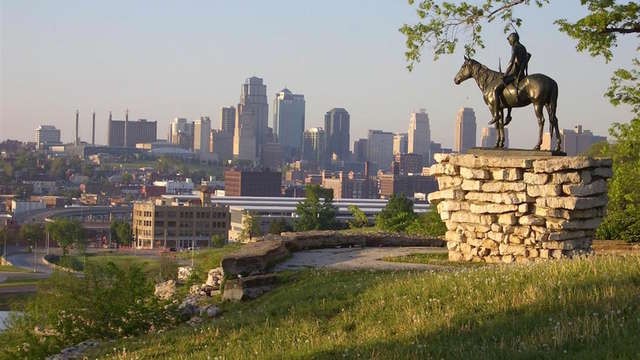
The Penn Valley Lake was one of the first features constructed on the land.
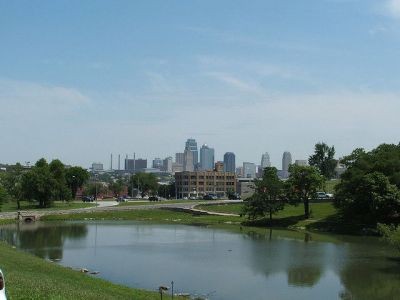
The WWI Museum and Memorial was constructed in Penn Valley Park in 1926.
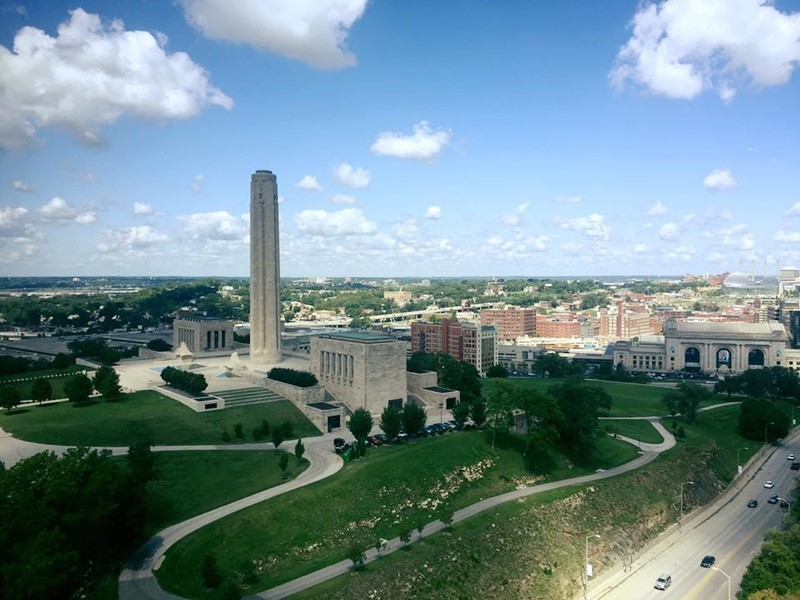
Penn Valley dog park
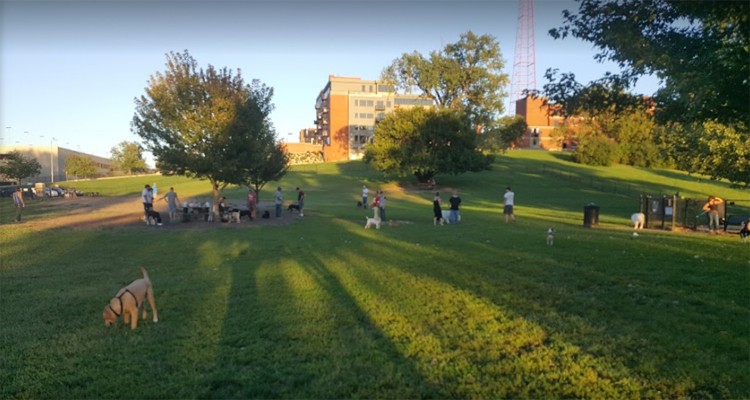
The Penn Valley Park swimming pool c.1925. Courtesy of Missouri Valley Special Collections, Kansas City Public Library.
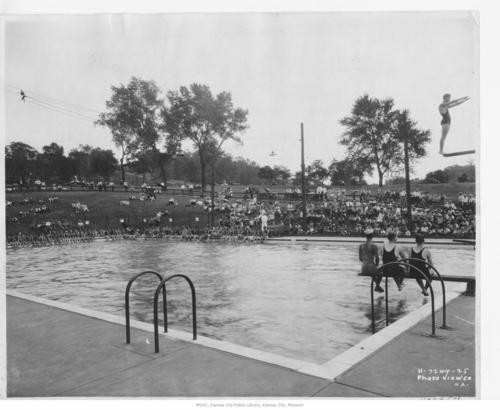
An overlook point at Penn Valley Park c.1907. Courtesy of Missouri Valley Special Collections, Kansas City Public Library.
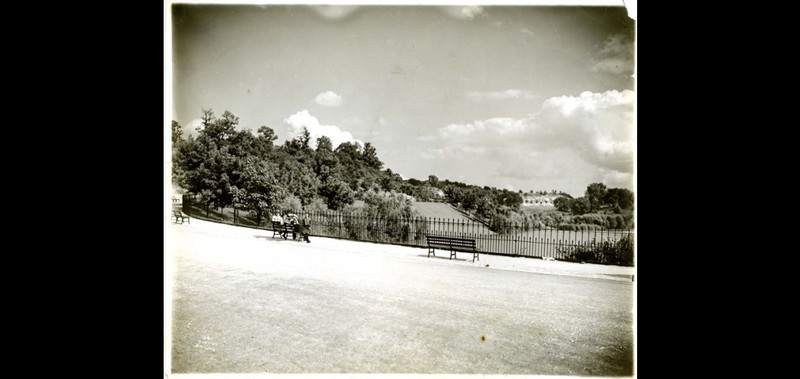
An aerial view of the WWII Veteran housing development at Penn Valley Park c.1947~. Courtesy of Missouri Valley Special Collections, Kansas City Public Library.
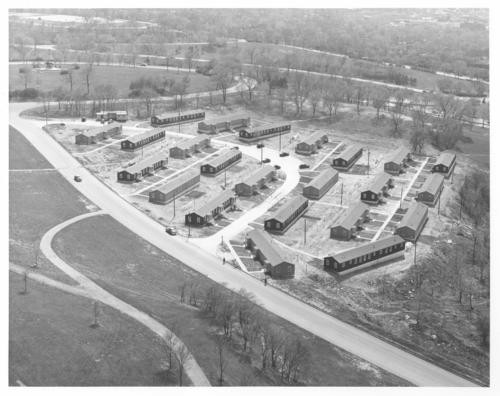
Backstory and Context
Text-to-speech Audio
In the early to mid-nineteenth century, the modern-day Penn Valley Park was a heavily wooded ravine along the Santa Fe trail used by pioneers to head west into the Burgeoning United States. Nearby was a very small town that would go on to become Kansas City. By the end of the American Civil War, Kansas City was starting to grow, a trend that accelerated with the construction of the Hannibal and St. Joseph Railroad over the Missouri river in 1869.
The population of the city was growing rapidly and in 1893, the local government deemed it necessary to create a commission to survey the available land for suitable locations to have parks, boulevards and pleasure areas. That commission decided, among other things, that the city needed a large, centralized urban park like the Bois de Boulogne in Paris or New York's Central Park. They recommended this area for a park due to its geography and history. In 1900, 300 houses and buildings on the land within the Penn Street Ravine were purchased by the government and removed to make way for a 176-acre park.
Penn Valley Park was one of the first three parks built in Kansas City and it was part of the larger 'City Beautiful Movement' in the late nineteenth century to early twentieth century. The engineering mind behind these citywide improvements was renowned landscape architect George E. Kessler. Early on, a lake was added and many amenities were built in the new Penn Valley Park including tennis courts, playgrounds, and swimming pools. The southern end of the park was used as a tourist camp for cross-country automobile drivers from 1918 to 1929. That same part of the park was used again during WWII as a recreational camp for soldiers on leave. After the war, this area continued to house veterans and their families until 1954. The park was heavily used and popular in its original state until 1949 when it was shrunk and most of its features were destroyed to make way for major thoroughfares like Southwest Trafficway and Interstate 35. Later, the park was cut nearly in half by Broadway Boulevard.
Today, Penn Valley Park offers a dog park, a lake, a tennis court, a skate park, baseball diamonds, and the Just Off Broadway Theater. Near the theater, are the ruins of an old maintenance building that was made of stone. The park also features many monuments including the Firefighter Fountain, Pioneer Mothers Statue, and the Scout Statue, which depicts a Sioux Nation Native American on horseback surveying the landscape of Kansas City and serves as a memorial to the local tribes that have inhabited the area for many centuries. In 1915 the statue was initially in Kansas City on a temporary basis, but it proved so popular that local residents raised enough money to purchase the statue outright and have it permanently placed in Kansas City. In addition, the National WWI Museum and Memorial lies at the north end of the park, which opened in 1926 as the Liberty Memorial.
Cite This Entry
Allen, Charles, Nichole Stahly, and Clio Admin. "Penn Valley Park." Clio: Your Guide to History. March 4, 2025. Accessed March 22, 2025. https://theclio.com/tour/2471/6
Sources
Meyer, August. 1893 Report Board of Park & Boulevard Commissioner, George E. Kessler. October 12th 1893. Accessed July 1st 2022. http://www.georgekessler.org/images/1893_Plan/1893_Plan.PDF.
The Scout, KC History . Accessed July 1st 2022. https://kchistory.org/image/scout-16.
Penn Valley Park, KC Parks. Accessed July 1st 2022. https://kcparks.org/places/penn-valley-park/.
Wolfenbarger, Deon. Historic Resources Survey of the 1893 Parks & Boulevard System, Accessed July 1st 2022. https://mostateparks.com/sites/mostateparks/files/1893%20Parks-Blvd%20Report.pdf.
Elements of the Museum and Memorial , The National WWI Museum and Memorial . Accessed July 1st 2022. https://www.theworldwar.org/explore/elements-museum-and-memorial.
https://maps.roadtrippers.com/us/kansas-city-mo/nature/penn-valley-park-kansas-city
https://www.gpsmycity.com/attractions/penn-valley-park-39340.html
https://www.bringfido.com/attraction/3231
https://kcparks.org/places/penn-valley-park-off-leash-dog-park/
https://kchistory.org/image/penn-valley-park-pool-0
https://kchistory.org/image/penn-valley-park-7
https://kchistory.org/image/housing-facilities-10

